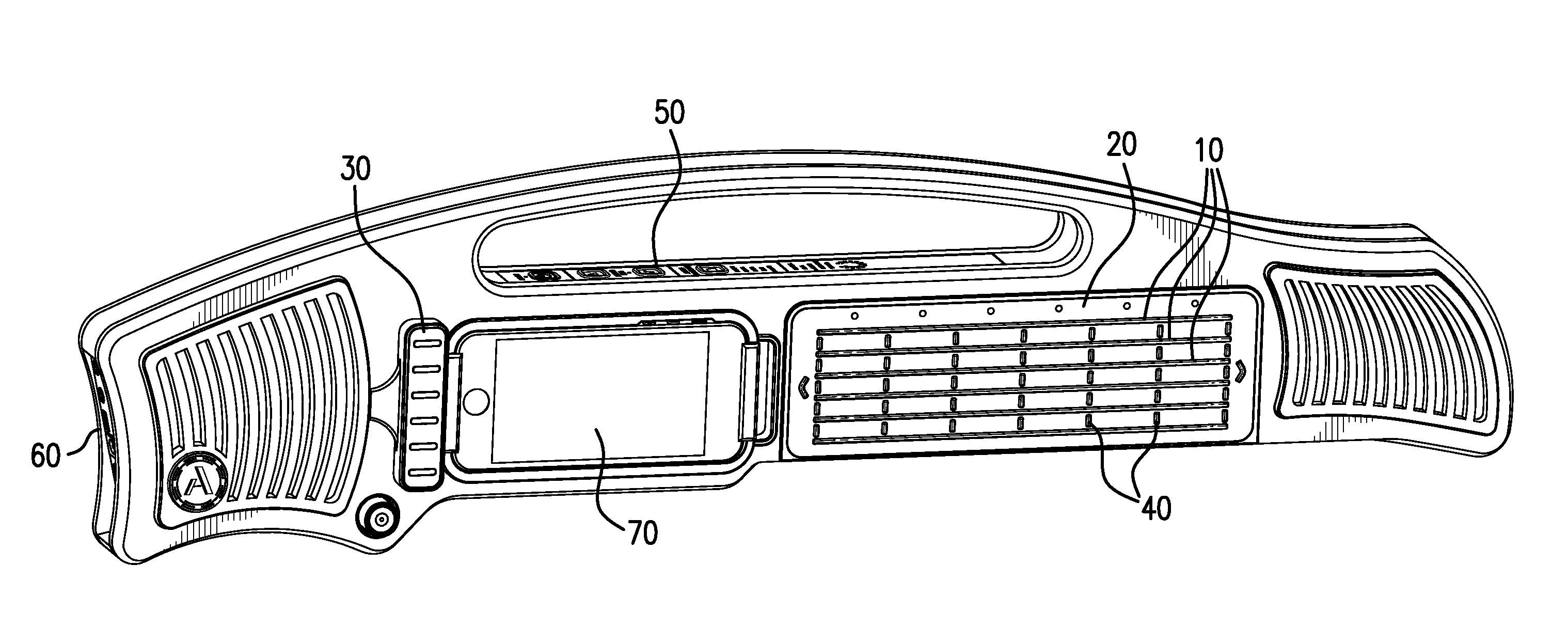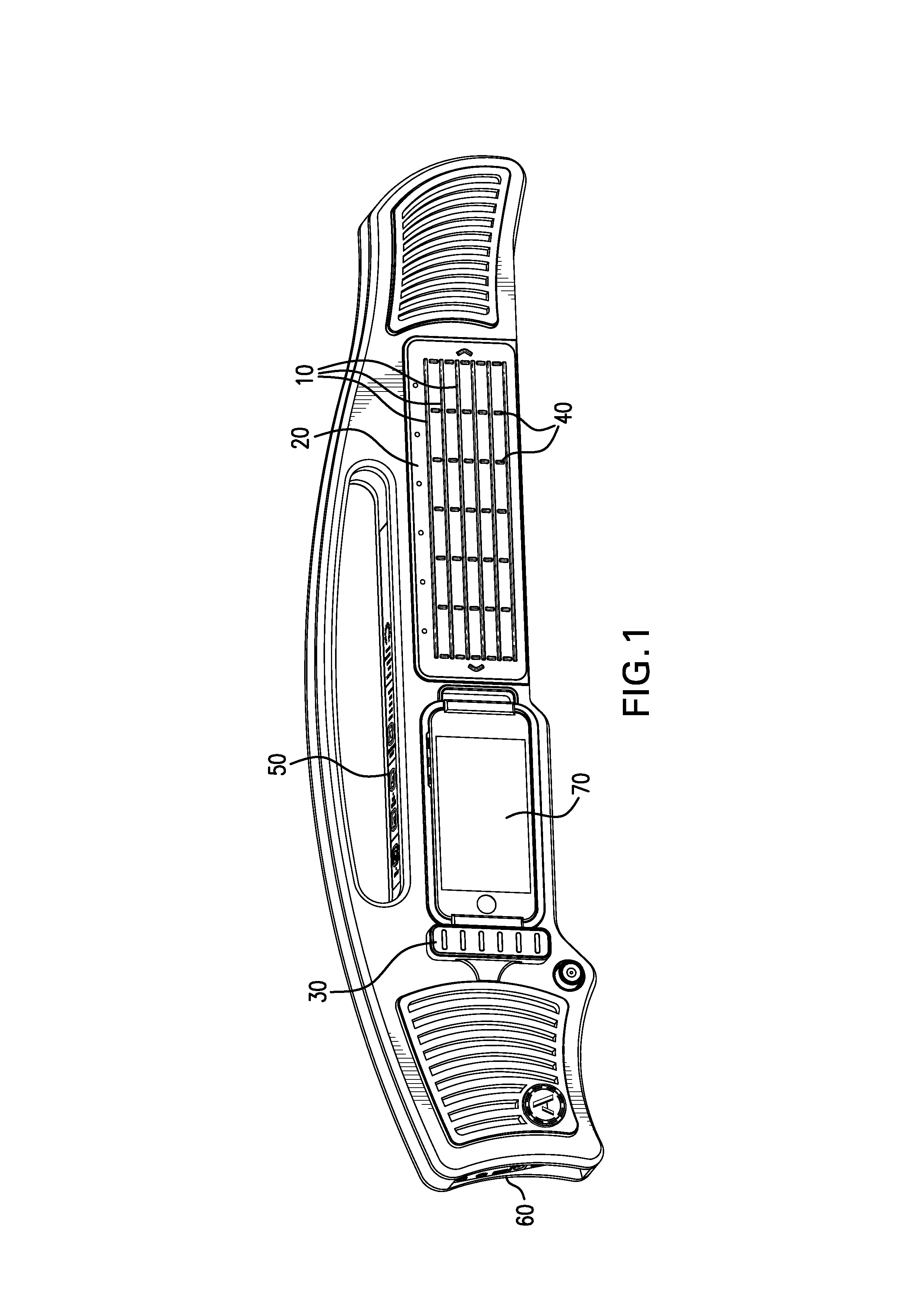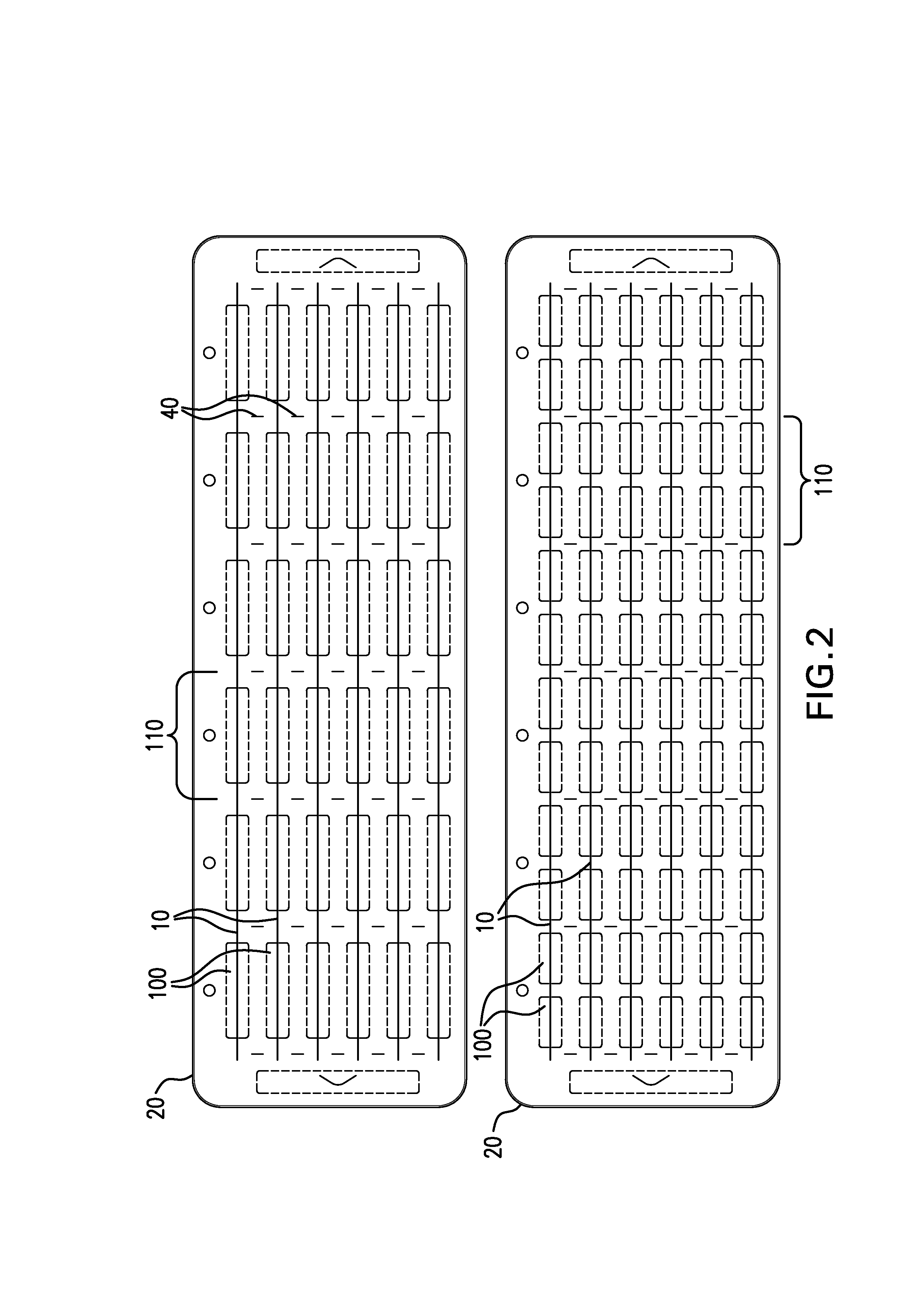However, the selection of hardware options available to musicians as means to
control software continues to be significantly limited.
Furthermore, with the advent of non-linear software for electronic performance and sound manipulation, hardware interfaces that are locked into one configuration for triggering events are not tapping the full potential of the software that they control.
However, the lack of tactile input in these touch screen computers requires that the musician must always look at the screen to know where to press his or her fingers.
This lack of blind tactility is a significant hindrance to a user.
Additionally, such screens generally lack force-sensitivity, accomplishing an approximation of force-sensitivity only through accelerometers and gyroscopes rather than directly from user touch points.
Traditional stringed instruments like the
guitar,
violin, banjo, and bass suffer from some notable limitations, largely because they rely on the vibration of strings and the
resonance of those vibrations through the body of the instrument to which they are attached.
These strings are prone to breaking, going out of tune, losing tonal quality as they age, and other shortcomings.
The strings also rely on mechanical systems like tuning pegs and bridges that require constant adjustment and are prone to failure.
The resonant bodies of these instruments can fall victim to breaking due to their fragile structure, warping or becoming distorted from environmental factors like
humidity.
These suffer from the difficulties of detecting string bends,
pitch differences in strings, and uncomfortably require the user to press the string directly down onto the sensor.
The continuing difficulty of this solution is that it requires advanced
signal processing to extract the intended notes from the large amount of
harmonic noise present on a physical string interface.
Another difficulty of such button interfaces is in the method of strumming, bowing, or other string-like triggering required to operate them.
Other devices use mechanical triggers (e.g.,
Guitar Hero devices) which flip back and forth as an inverted
guitar “pick.” These devices have very limited expressive potential.
Touch screens also lack force and pressure-sensitivity, except through workarounds such as accelerometers, which limits the subtle musicality of triggering notes as would be available on a traditional stringed instrument.
While there have been attempts to create more varieties of instrument-like hardware controllers for making
electronic music—
MIDI guitars, electronic drum kits, and the like—they have suffered from a lack of well-designed ergonomic interfaces that allow for alternative musical techniques.
By being limited to dominant non-
electronic instrument forms (e.g., keyboards, drums, guitars), these devices have inherent musical limitations.
He or she will not be able, for instance, to play the
guitar like an upright bass or
violin.
For a musician who wishes to use multiple techniques such as bowing a
violin or
cello,
fading in notes or pitches as on a pedal steel guitar, or switching between fretted and non-fretted necks during a performance, there are no solutions currently available in a single device.
Skill and familiarity that musicians have already cultivated with their instruments of choice are often non-transferable to
electronic music making
Conversely, for a musician who learns on these non-traditional devices, it is difficult to translate that musical skill onto other instruments, of traditional form or otherwise.
A student of the Theremin, for instance, is not likely to be able to play a violin on the first try.
In short, while current
electronic instruments may or may not be ergonomic, they fail to resemble traditional instrument ergonomics enough to enable translation of skills between them.
There is a lack of instruments available to enable students to learn multiple techniques in a single interface.
Additionally, traditional and current electronic stringed instruments do not capture sound in ways that meet the artistic goals of many musicians and producers.
 Login to View More
Login to View More  Login to View More
Login to View More 


